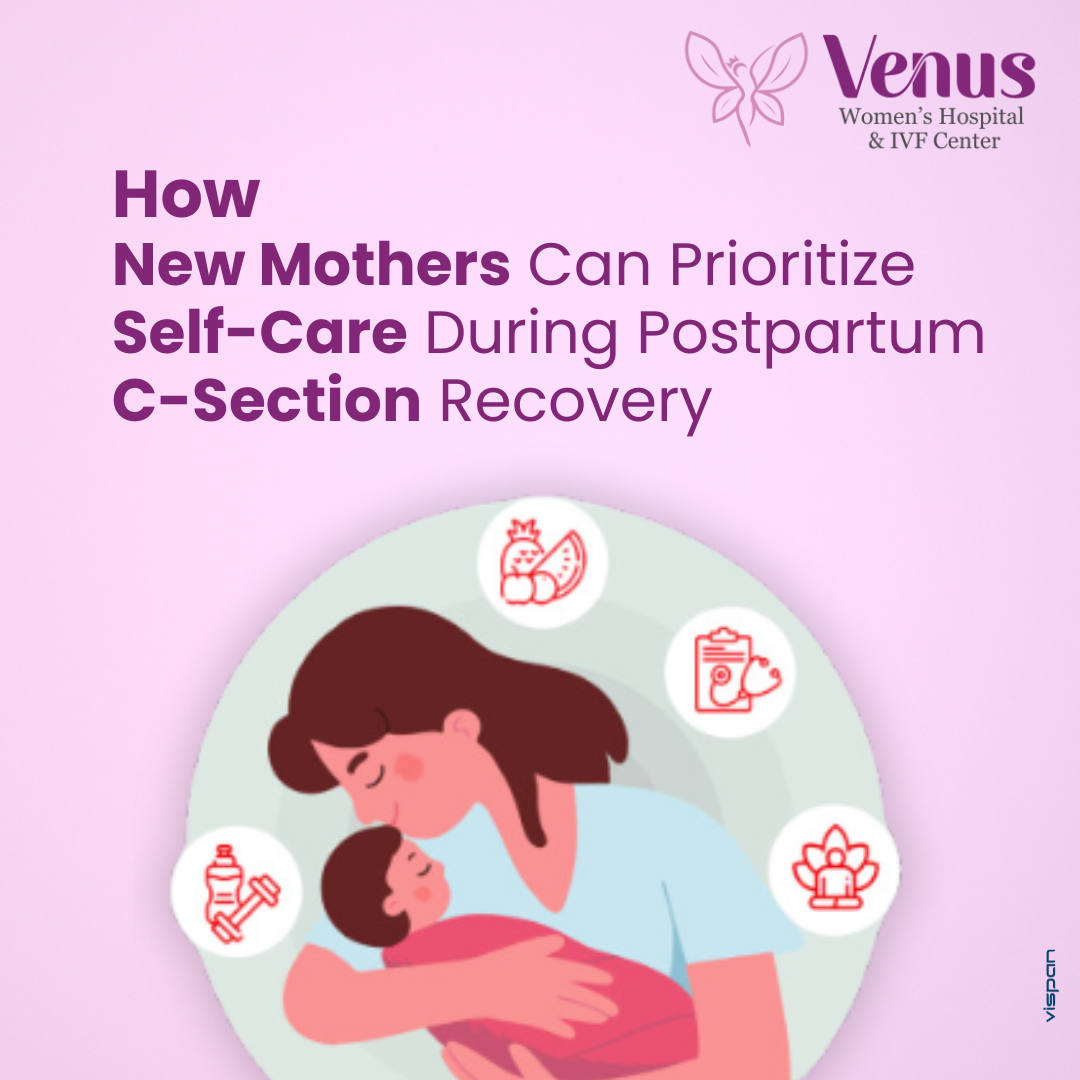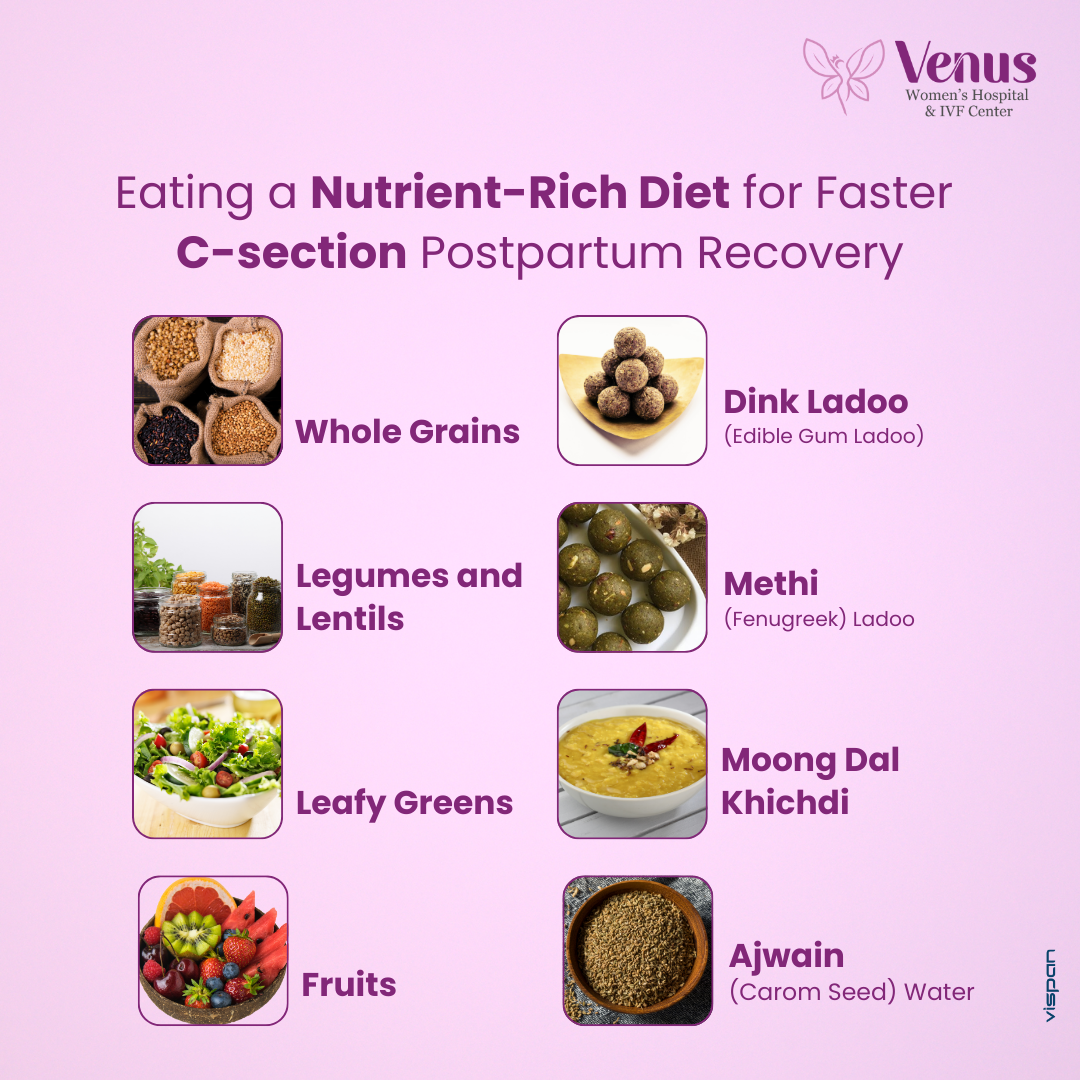

Bringing a baby into the world is a beautiful experience, but postpartum recovery, especially after a C-section postpartum journey—requires special care. Whether you had a vaginal birth or are focusing on postpartum C-section recovery, prioritizing self-care is essential.
Let us understand some practical ways for new mothers to heal effectively, manage pain, and regain strength while adjusting to life with a newborn.
The body undergoes significant changes during childbirth, and postnatal recovery is a crucial phase for healing. Postpartum care for C-sections differs slightly from vaginal birth recovery, as it involves incision healing, pain management, and limited physical activity.
To ensure a smooth post-pregnancy recovery, new mothers should focus on rest, nutrition, and gentle movement while avoiding strain on the surgical area.
Sleep is a cornerstone of postpartum C-section recovery. Since major abdominal surgery requires extended healing, getting enough rest is crucial.
Here’s how to improve sleep during C-section postpartum recovery:
1. Nap when your baby sleeps to restore energy.
2. Limit physical exertion—avoid heavy lifting or strenuous chores.
3. Use supportive pillows to find a comfortable sleeping position.
4. Accept help from loved ones to manage daily responsibilities.
Lack of sleep can slow postnatal recovery, making rest an essential part of healing.

Proper nutrition fuels post-pregnancy recovery by promoting tissue repair, balancing hormones, and boosting energy.
Include these foods in your diet for optimal postpartum recovery after a cesarean:
Traditional Postpartum Recipes:
After a C-section, the incision site can feel sore for weeks. After cesarean care, managing pain properly helps ensure a comfortable recovery.
Follow your doctor’s pain relief plan, taking prescribed medications as needed.
Pain and discomfort are a natural part of postpartum care for C-sections, but they should gradually improve with time.
While rest is essential, light activity can aid in postnatal recovery by improving circulation and preventing stiffness.
These small movements help enhance C-section postpartum healing while preventing complications.
Proper after-cesarean care includes wound management and infection prevention. Keeping the incision clean reduces the risk of complications.
Gently clean the incision area with warm water and mild soap.
Good hygiene practices ensure safe and smooth postpartum recovery after a C-section postpartum experience.
Post-pregnancy recovery is not just physical—emotional health is equally important. Hormonal changes, exhaustion, and adjusting to motherhood can trigger mood swings, anxiety, or postpartum depression.
Your mental and emotional health is just as crucial as your physical postpartum C-section recovery.
A strong support system is essential for easier post-pregnancy recovery. Whether from a partner, family, or friends, help can ease stress and promote healing.
You don’t have to do everything alone—support makes C-section postpartum healing smoother.
Knowing what’s normal and what’s concerning during postnatal recovery is crucial. Seek medical attention if you experience:
If you recognize any signs of postpartum complications, such as excessive bleeding, severe pain, high fever, or symptoms of depression, it is crucial to seek medical attention promptly. In Rajkot, Venus Women's Hospital & IVF Center (best IVF center in rajkot, Saurashtra) offers specialized care for new mothers.
They provide comprehensive postpartum care, ensuring physical and emotional well-being during recovery.
Motherhood should be joyful, not overwhelming. As you recover from a C-section postpartum journey, focus on bonding with your newborn while caring for yourself.
Remember, a healthy mom leads to a happy baby!
Postpartum recovery after a C-section requires patience, self-care, and a strong support system. By prioritizing rest, nutrition, gentle movement, and emotional well-being, you can heal effectively while embracing your new journey as a mother.
Your body has done something incredible—now it’s time to give yourself the care and love you deserve.